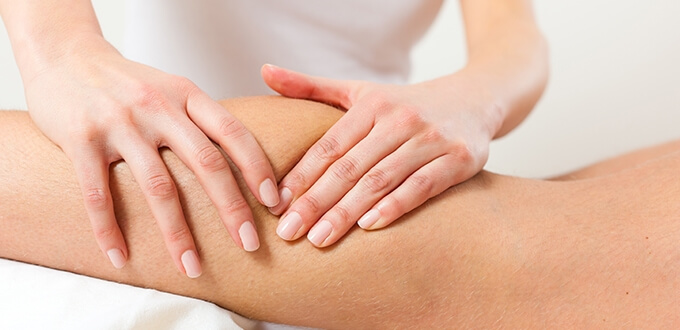
After lymph node resection, manual lymphatic drainage is recommended, therapy with an important role both in the prevention of lymphedema and as a form of its treatment, along with compressive therapy and physical therapy. The general purpose of manual lymphatic drainage in the treatment of lymphedema is to redirect the lymphatic flow from the area where the lymphatic circulation is affected, through the lymphatic vessels.
Drainage is part of the complex decongestant treatment (TDC) implemented at the Centrokinetic Clinic, which includes methods adapted to each patient.
Edema is defined as the existence of excess fluid in the extracellular matrix. The appearance of lymphedema is caused by the inability of the lymphatic system to resorb excess fluid resulting from venulo-capillary circulation, as a result of insufficient lymphatic drainage. Manual lymphatic drainage is one of the main components of complex decongestant therapy and has the role of promoting the resorption of edema constituted by the excess interstitial fluids responsible for lymphedema.
Manual lymphatic drainage is a very gentle, rhythmic manual technique, designed to affect fluid components and lymphatic structures located in the superficial tissues, respectively on the skin and subcutaneous tissue. Lymphedema is manifested almost exclusively in the subcutaneous tissue, represented by the connective tissue arranged between the skin and the muscle tissues. To achieve the desired effect, the pressure applied by the therapist should be sufficient to mobilize the subcutaneous tissues against the fascia, but without involving the underlying muscle tissue.
- improving lymphatic flow;
- development of a collateral lymphatic circulation;
- increasing the frequency of contraction of lymphatic vessels;
- stimulating the activity of the lymph nodes in the role of regulating the lymphatic flow and the lymph concentration;
- reduction of venous stasis;
- improving tissue resorption.
Prices
You can find here a detailed list of the prices of individual services. But any correct recovery process is based on a mixed plan of therapies and procedures, customized according to the condition, stage of the condition, patient profile, and other objective medical factors. As a result, in order to configure a treatment plan, with the therapies involved and the prices related to the plan, please make an appointment here for an initial consultation.
MAKE AN APPOINTMENT
FOR AN EXAMINATION
See here how you can make an appointment and the location of our clinics.
MAKE AN APPOINTMENT

































































































































